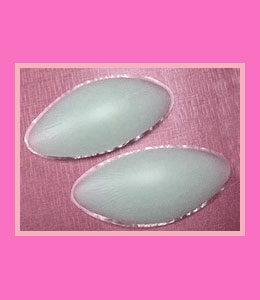
Calf implants are a unique prosthetic solution for people who feel that their lower legs are not in proportion with the rest of their anatomy. These implants are typically made from silicone and are in many ways the same as a buttocks implant. Calf prosthetics are not commonly available from every cosmetic surgeon, so it may take some time for a patient to locate a care provider who offers them as part of an overall body-sculpting process.
It is crucial to remember that any prosthetic implant inserted into the body will not only change its aesthetic form, but may also influence its functionality. In the case of the lower leg, this region is needed to provide mobility, balance and general physical functionality, so patients are strongly advised to learn all the possible downsides to the procedure before undertaking it.
Calf Implants Explained
Prosthetic implants for the calf are silicone medical devices which are positioned under the skin to bolster the natural contour of the lower rear leg. These implants will fit over the existing musculature, making the limb appear fuller and more proportionate with the rest of the body.
Calf prosthetics demonstrate all the usual risks of any implanted device, including rejection, infection and the various complications of cosmetic surgery which are inherent to any operative intervention.
In some instances, patients find these implants to deteriorate muscular performance, or cause chronic discomfort, especially upon movement. However, these reports are not common and some resolve with time.
Reasons for Wanting Calf Prostheses
The vast majority of people who receive implants in the calf region are professional bodybuilders or fitness models. The calf muscle is difficult to increase in size in some people, making them fall short of their body image goals.
If the upper body is huge and the legs are diminutive, the sense of aesthetic proportion will be off. Implants allow an easy way for weightlifters to bulk up the lower limbs, enacting a balanced look throughout the body.
The remainder of people who receive calf implants typically do so to repair a traumatic injury or damage due to disease. In these cases, the patient may have lost part or all of the calf muscle and the implant is used to recreate a more typical anatomical appearance.
Calf Prosthetics and Body Proportion
Wanting calf prosthetics is not a common aspiration, but is still an important one for people who are incredibly demanding about their bodily criteria. In the pursuit of perfection, some people will go to extremes. If nature and exercise can not provide full and muscular looking calves, then plastic surgery can step in and fulfill all these desires.
To learn more about implant prosthetics for the calf region, contact a cosmetic surgeon who performs the procedure or call a local aesthetic surgery association for a referral.
Be sure to talk to former patients who actually had the operation performed and see how they feel about their new calf prosthetics, before deciding to go through with the procedure yourself.



